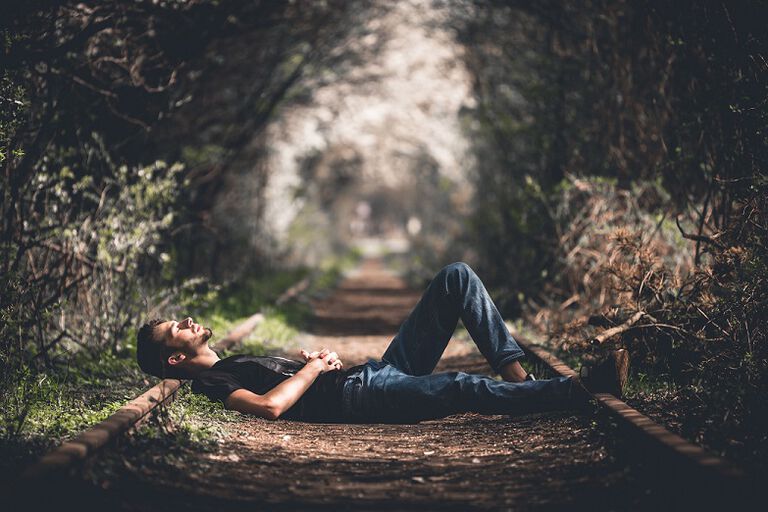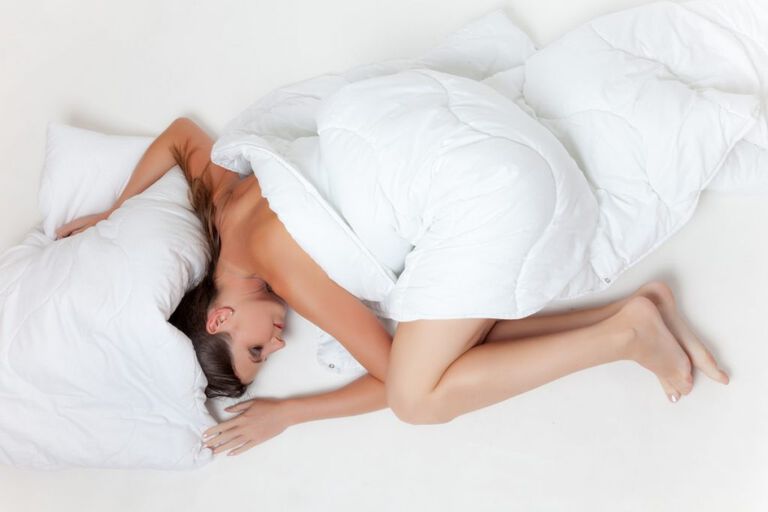SLEEP WALKING: SYMPTOMS, CAUSES AND SOLUTIONS

THE SYMPTOMS OF SLEEP WALKING
Also known as somnambulism, sleep walking is a sleep disorder that causes people to walk around or undertake activities while seemingly asleep. Activities can include dressing and undressing, eating, using the toilet, and even driving a car.
Sleep walking episodes can last anywhere from a few minutes to 30 minutes or longer, and may occur up to three or four times a week*. While sleep walkers are usually difficult to wake, they will be disorientated if woken, and for the most part, they will have no memory of what they have been doing.
As a condition more commonly seen in children than adults, studies suggest 2-3% of children sleep walk frequently, and around 5% sleep walk occasionally. As for adults, 3-4% of adults say they have sleep walked at least once in their lives, but only 0.4% say they sleep walk now*.
Typically, for those who sleep walk, episodes begin in childhood, reduce in their teens, to then stop altogether by young adulthood. For some, however, sleep walking may continue throughout their life.
Sleep walking in itself is not harmful, but it can result in injury if the sleep walker trips over or walks into something, or worse, gets out of the house or behind the wheel of a car. Sleep walking can also interfere with quality of sleep, both for the sleep walker and his family.
So, what can be done to help? If you suffer from sleep walking, or someone in your household does, read this guide to find out more about what causes sleep walking, and to find sleep walking solutions that can help you deal with it.
WHAT CAUSES SLEEP WALKING?
While it is unknown what causes sleep walking, there are some factors that may encourage sleep walking in those who are prone to it. You may be more likely to sleep walk if:
- You are not getting enough sleep,
- You have irregular sleep times,
- You are feeling stressed or anxious,
- You are ill or have a fever,
- You are taking certain drugs or medications,
- You are drinking too much alcohol,
- You suffer from certain other medical conditions, such as sleep apnoea or epilepsy.
Genetics can also play a part, so if you have a family history of sleep walking, you may be more likely to sleep walk as well.
In terms of children sleep walking, it can simply be a phase they go through. However, there is a higher instance of sleep walking in children who experience bedwetting or night terrors***. These are related disorders, and also tend to run in the family.
HOW DO YOU PREVENT SLEEP WALKING?
If you sleep walk or someone close to you sleepwalks, it’s quite likely you’ve spent time looking for sleep walking solutions. However, just as there is no known cause for sleep walking, there is no known way to prevent sleep walking either.
In the long term, most people who sleep walk grow out of it over time. In fact, of those who sleep walk as a child, less than a quarter continue to sleep walk as adults****. Nevertheless, sleep walking may return occasionally into adulthood during periods of stress or illness.
While you may not be able to stop sleep walking in the short term, it can be helpful to focus on creating a more comfortable environment for the sleep walker, while helping to reduce the chances of injury.
With children who sleep walk, bunk beds are best avoided. It’s also a good idea to remove sharp or breakable objects from the bedroom, installing gates on stairways, and ensuring windows and doors are locked.
For both adults and children, working on good sleep hygiene can also be effective. This can include going to bed and waking up at regular times, creating a relaxing routine before bed, and for adults, reducing alcohol and caffeine intake.
You may choose to speak to your doctor if sleep walking episodes occur every night, or if sleep walking starts to affect day-to-day life. In adults, treatment for sleep walking may include hypnosis. Sedative-hypnotics and antidepressants have also been known to reduce sleep walking in some people.
SOURCES
*https://www.sleephealthfoundation.org.au/pdfs/sleepwalking.pdf
**https://www.sleephealthfoundation.org.au/pdfs/sleepwalking.pdf
***https://www.sleepfoundation.org/sleep-disorders-problems/abnormal-sleep-behaviors/sleepwalking
****https://www.sleephealthfoundation.org.au/pdfs/sleepwalking.pdf
Feel it for yourself
Find a TEMPUR store or Stockist and try out our range of mattresses for yourself

SIGN UP FOR THE NEWSLETTERS!
By signing up, you agree to receive TEMPUR Australia’s products, services, news, reviews and promotions by emails. For more information on how we process your personal data, please refer to our Privacy Policy.



